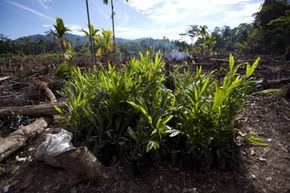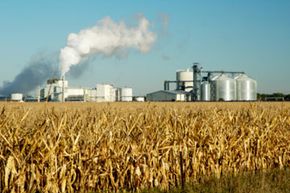Switching the world's energy consumption habits from petroleum-based fuels to biofuel, or plant- and renewable source-based fuels, makes good sense in some ways. Unlike oil reserves, biofuel crops are renewable -- after this year's harvest, plant next year's fuel source. Also, the emissions from many biofuels contain fewer harmful particles and chemicals than petroleum fuel emissions. The biggest selling point for biofuels, though, is the argument that cleaner-burning fuel, made from a source that absorbs carbon dioxide as it grows, can help us cut down on the emissions that are contributing to global climate change.
But the biofuels most likely to be produced on a large scale, such as corn in the United States, sugar cane in Chile and palm oil in Indonesia, carry significant drawbacks. Producing them in an economical manner that supports widespread biofuel use can cause serious harm to the environment. And the economics of producing these fuels in a way that capitalizes on their environmental benefits could make them too expensive to produce and distribute on a large scale.
Advertisement


